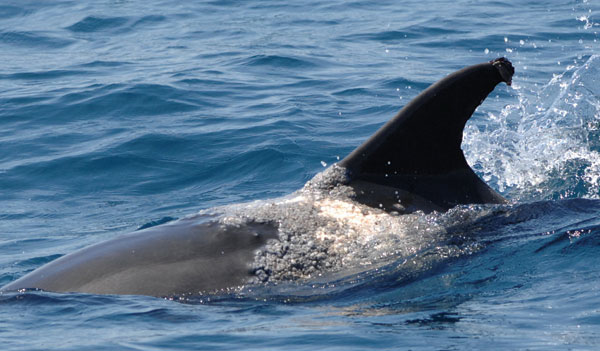Volume 15, Number 4—April 2009
Dispatch
Lobomycosis in Offshore Bottlenose Dolphins (Tursiops truncatus), North Carolina
Figure 2

Figure 2. Free-swimming bottlenose dolphin (offshore ecotype) sighted off the Outer Banks of North Carolina with raised gray to white nodules over the dorsal surface, consistent with those of lobomycosis seen in other Atlantic bottlenose dolphins. Xenobalanus sp., a barnacle, is adhered to the tip of the dorsal fin. Image provided by Ari Friedlander, Duke University Marine Laboratory, Beaufort, NC, USA.
Page created: December 10, 2010
Page updated: December 10, 2010
Page reviewed: December 10, 2010
The conclusions, findings, and opinions expressed by authors contributing to this journal do not necessarily reflect the official position of the U.S. Department of Health and Human Services, the Public Health Service, the Centers for Disease Control and Prevention, or the authors' affiliated institutions. Use of trade names is for identification only and does not imply endorsement by any of the groups named above.